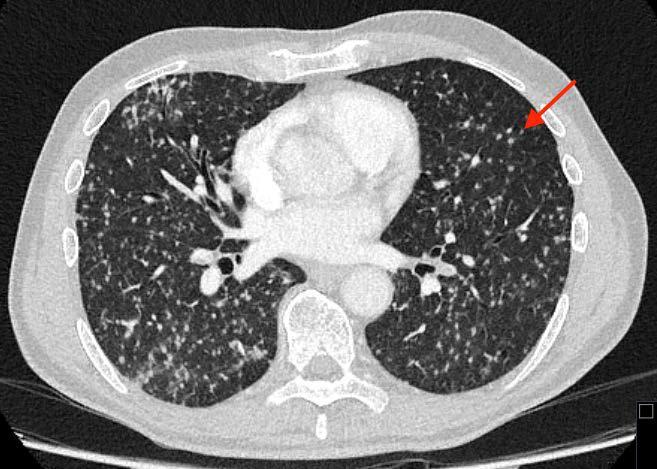Disseminated Miliary Tuberculosis Following Intravesical BCG Therapy: A Rare But Serious Complication
DOI:
https://doi.org/10.3941/jrcr.5809Abstract
Intravesical Bacillus Calmette-Guérin (BCG) therapy is a standard immunotherapy for non-muscle-invasive bladder cancer (NMIBC). Although generally safe, systemic dissemination leading to miliary tuberculosis (TB) is a rare but potentially life-threatening complication. We present a case of a 71-year-old male who developed miliary TB three weeks after the third cycle of BCG instillation. Chest CT revealed diffuse, randomly distributed <2 mm nodules. PCR confirmed Mycobacterium bovis infection. Treatment with isoniazid, rifampicin, and ethambutol led to clinical improvement. Radiologists should be aware of this rare complication to ensure prompt diagnosis and management.

Downloads
Published
Issue
Section
License
Copyright (c) 2025 Journal of Radiology Case Reports

This work is licensed under a Creative Commons Attribution-NonCommercial-NoDerivatives 4.0 International License.
The publisher holds the copyright to the published articles and contents. However, the articles in this journal are open-access articles distributed under the terms of the Creative Commons Attribution-NonCommercial-NoDerivs 4.0 License, which permits reproduction and distribution, provided the original work is properly cited. The publisher and author have the right to use the text, images and other multimedia contents from the submitted work for further usage in affiliated programs. Commercial use and derivative works are not permitted, unless explicitly allowed by the publisher.





